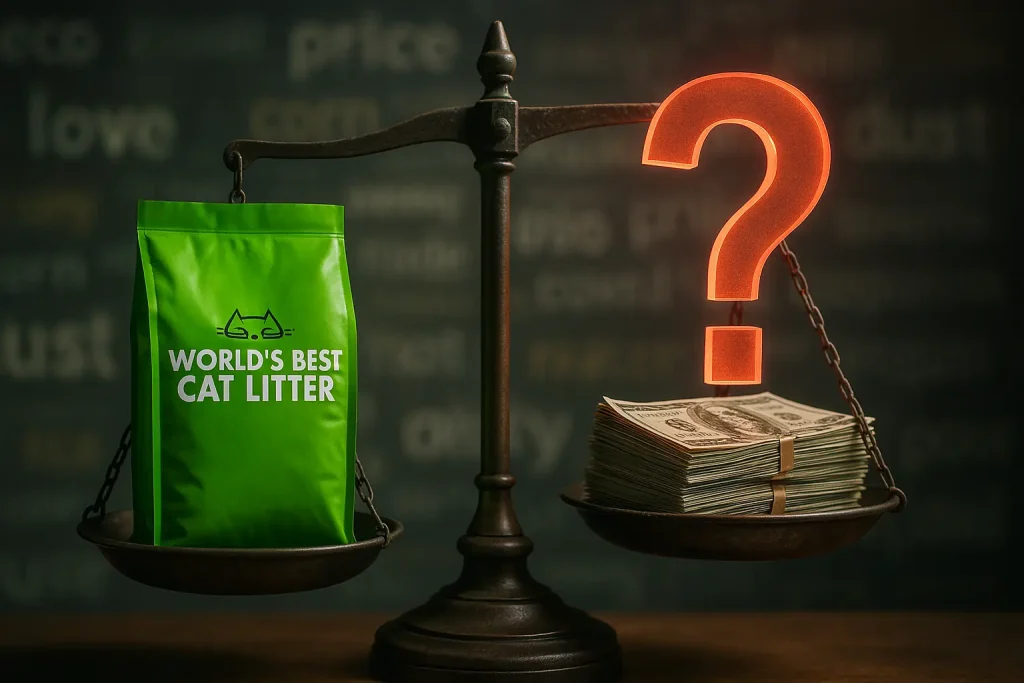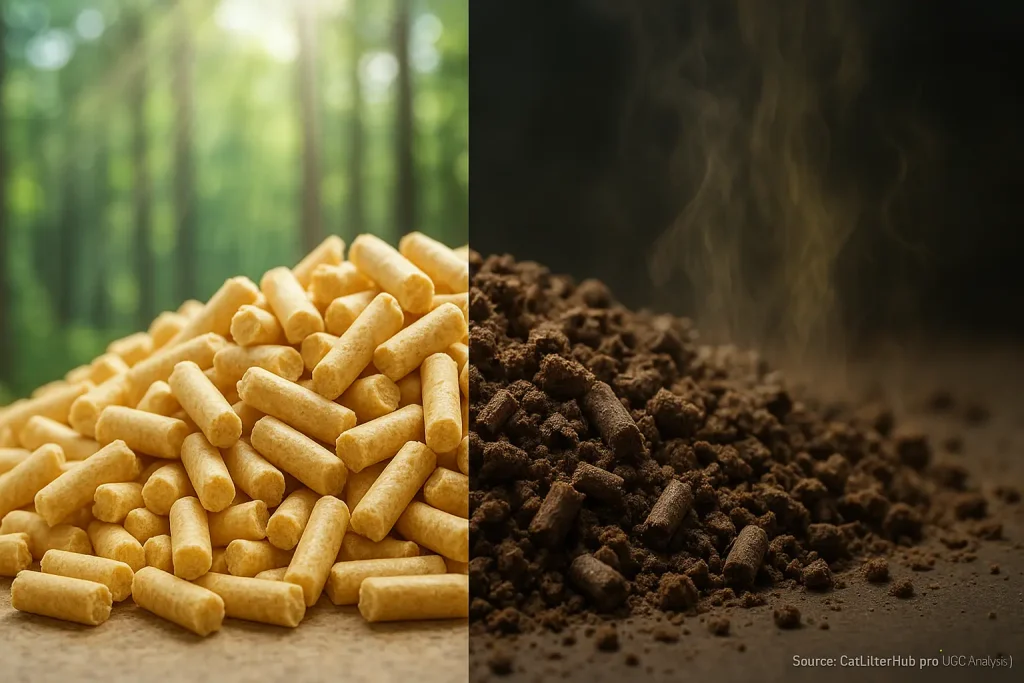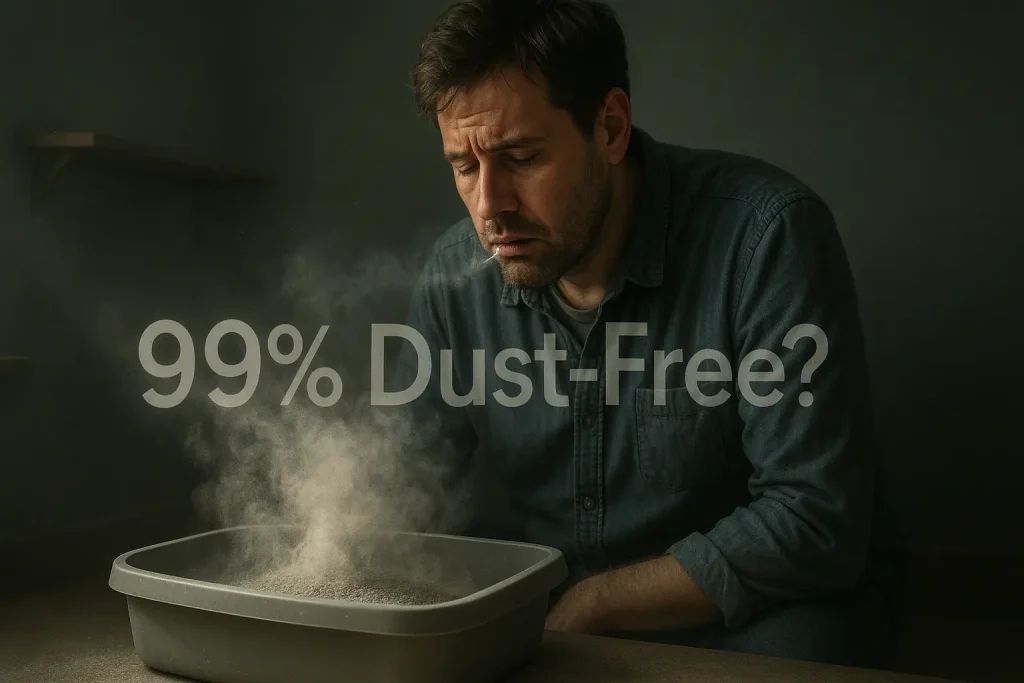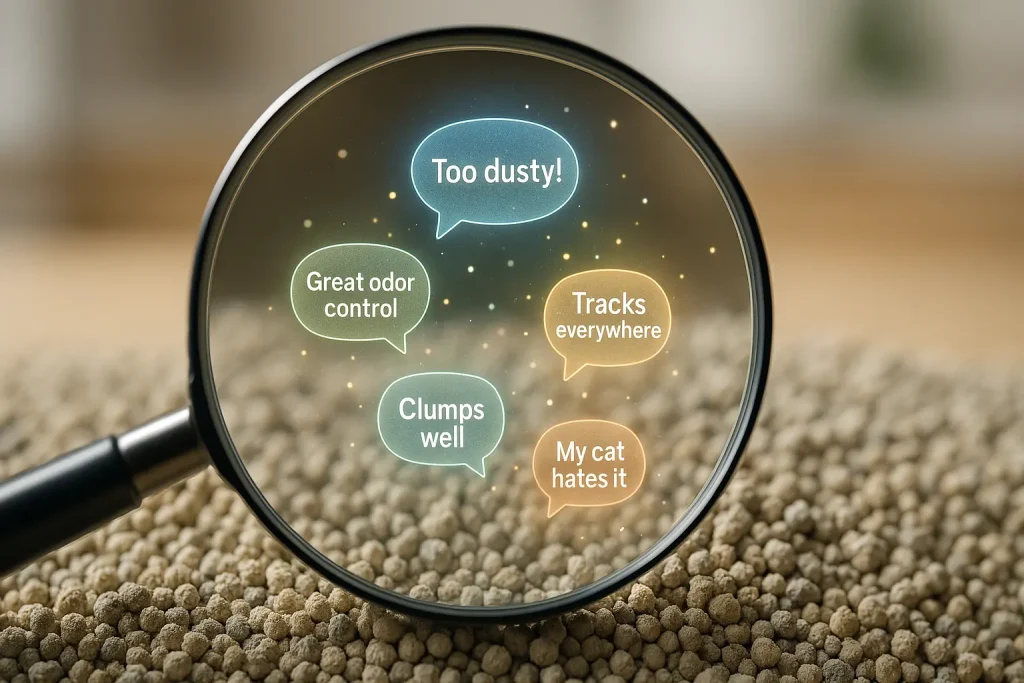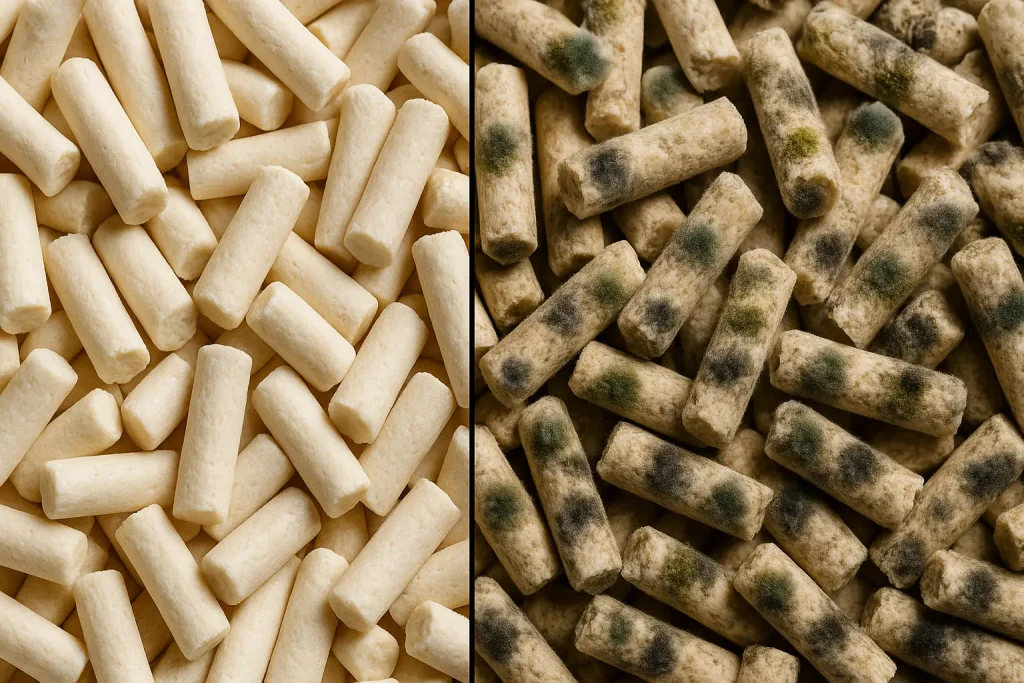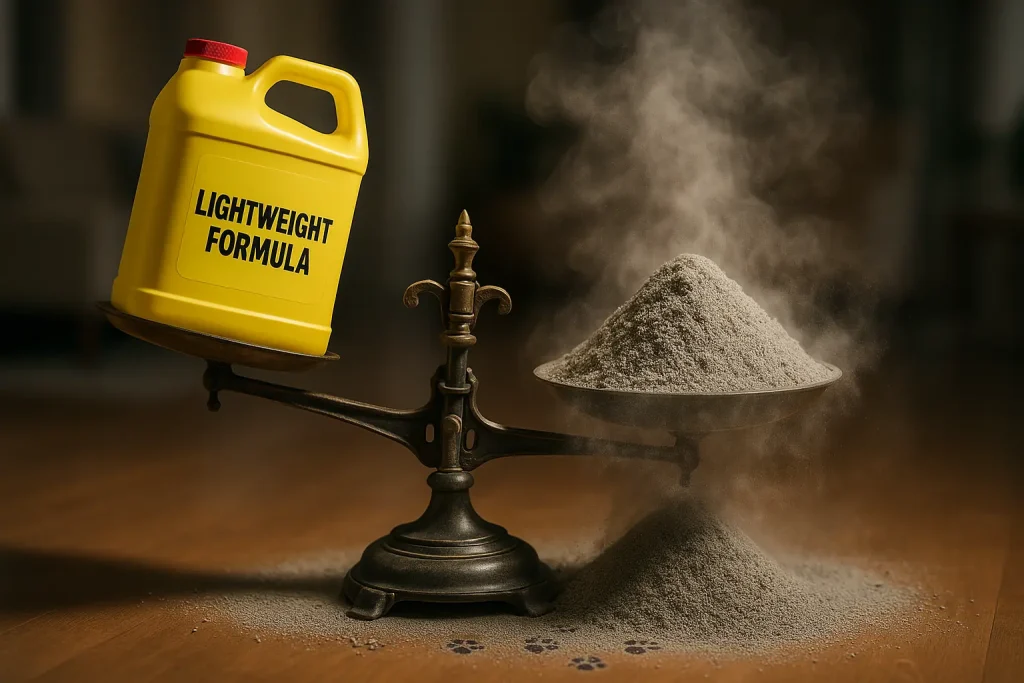The Bentonite Divide: What's the Real Scoop on Sodium vs. Calcium Clays?
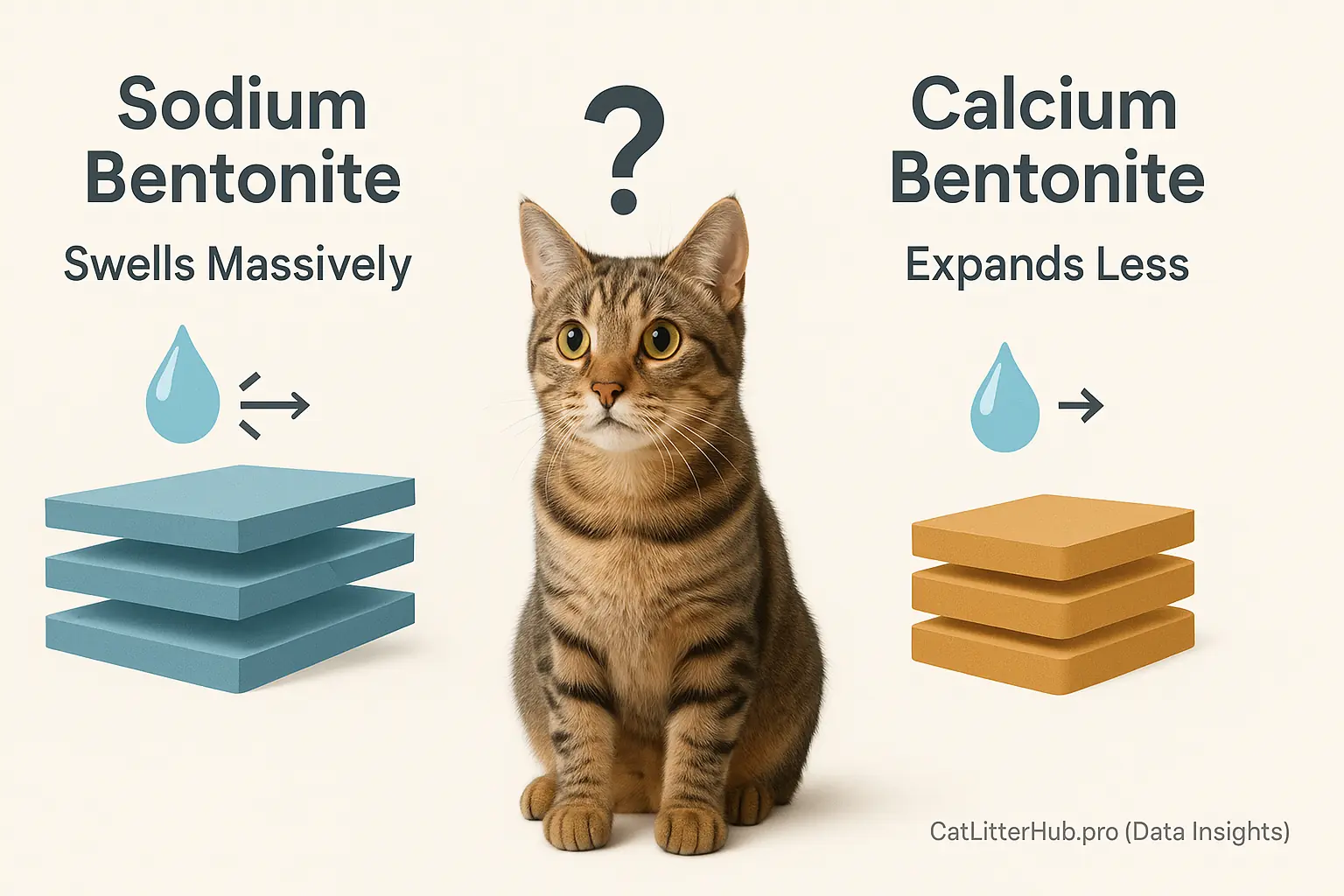
Clay litter is clay litter, right? Not so fast. Most clumping litters use bentonite clay. Two main types exist: sodium bentonite and calcium bentonite. Sodium bentonite swells significantly more when wet, a key for clumping. Calcium bentonite expands less; manufacturers might add activators to boost its clumping power. Many owners understandably assume all clay performs much the same.
But does this molecular difference truly matter to your cat? Or your scooping arm? Cat Litter Hub launched an investigation. We dug deep into thousands of owner reviews. Our mission: uncover if bentonite type genuinely affects key performance. This means clumping strength, dust levels, and your litter box peace of mind.
Technical specifications can be dense. User experience tells the real story. We find that story in countless forum discussions and product testimonials. Our team analyzes this widespread feedback, seeking patterns. The goal: see if one bentonite type consistently delivers a better experience. This judgment comes from people using it daily.
Clumping Showdown: Sodium's Iron Grip vs. Calcium's Softer Touch – What Users Say
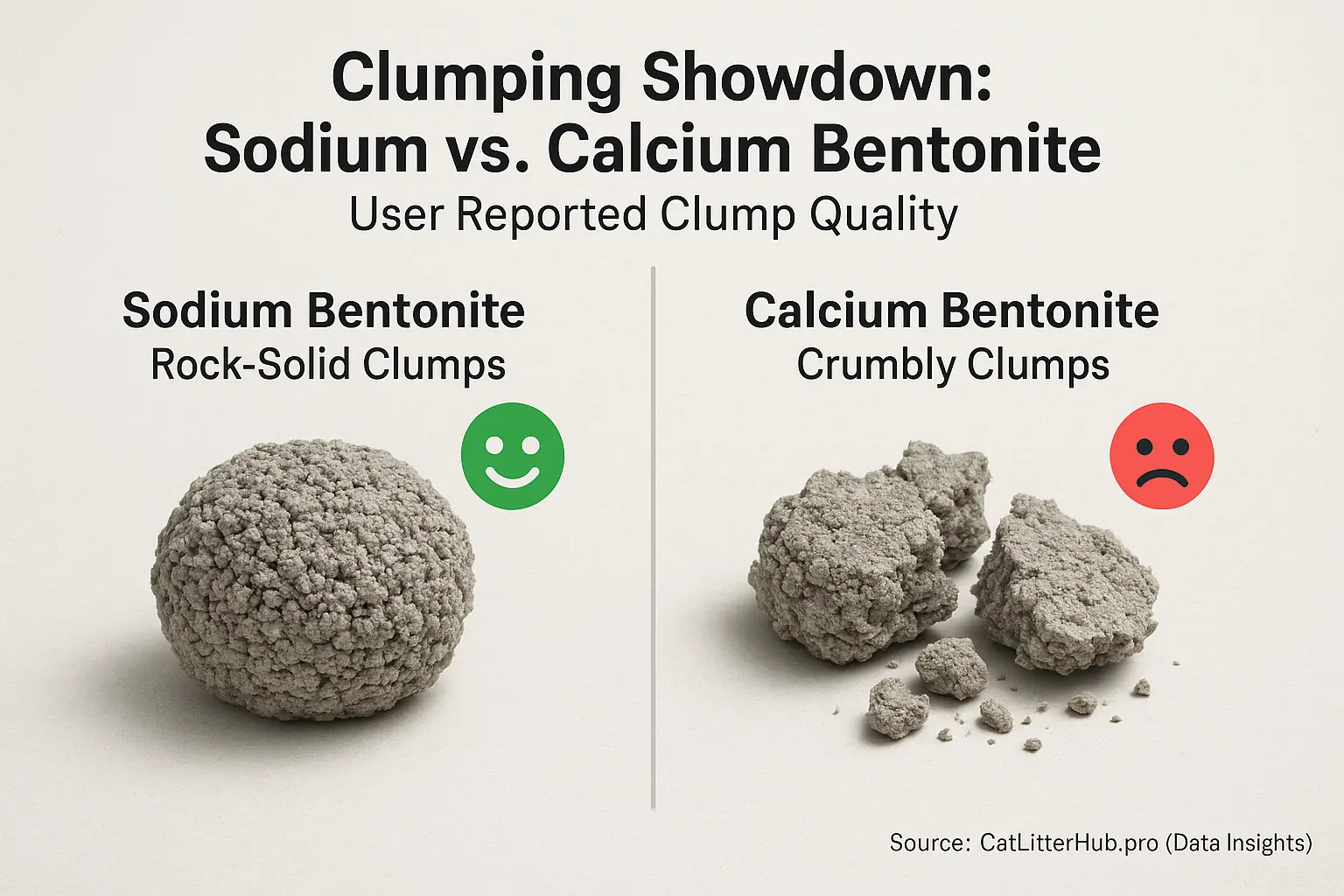
Picture this. You approach the litter box. The scoop enters. The clump emerges whole. A perfect rock. No crumbling. Zero mess. Many users chase this sodium bentonite dream. Users frequently praise these hard, durable clumps. Sodium bentonite often delivers this satisfying scoop.
Then, some owners face the calcium bentonite reality. Or they use certain blends. Their clumps often disappoint. The common cry "It just falls apart!" echoes through user feedback. These softer clumps break easily during scooping. This breakage causes significant scooping frustration for many.
Scoop-ability is a major differentiator. User satisfaction often hinges on this simple act. Pan sticking also vexes owners. Which type gets more blame? User reports frequently link softer, crumbling clumps to bottom-pan cementing. Users often tie these experiences to calcium or specific blends. Users find hard sodium clumps release more cleanly if they stick.
The Absorbency Angle: Which Bentonite Soaks It Up Better, According to Users?
Sodium bentonite frequently tops user discussions for absorbency. Owners describe its rapid liquid uptake. This quick action is a highly valued characteristic. Users report it locks moisture away almost instantly, a "sponge-like" quality praised in many reviews. This immediate containment is often linked directly to superior initial odor control. Fast absorption means less smell for these cat parents.
User experiences with calcium bentonite's absorbency are more varied. Some cat owners report slower liquid intake. This delay sometimes allows moisture to reach the litter pan bottom. A definite frustration. However, other users find certain calcium bentonite blends surprisingly effective at moisture management. Frequent litter changes appear key for these reported successes with calcium varieties.
The perceived speed and completeness of absorption tie closely to odor management in user feedback. Sodium bentonite's swift gelling action is widely credited by users with trapping odors on contact. Owners also frequently note its significant swelling capacity, indicating it absorbs a larger liquid volume. "It just seals the smell in," is a common sentiment regarding its odor control. Conversely, slower absorption, sometimes noted with calcium types, can allow odors more time to diffuse before being captured. Reports of liquid pooling, leading to persistent odors and difficult scooping, appear more frequently in feedback concerning some calcium bentonite products. This difference in immediate moisture trapping and perceived volume handling significantly shapes user preference.
Dust Bowl Diaries: User Reports on Dust Levels from Different Bentonites
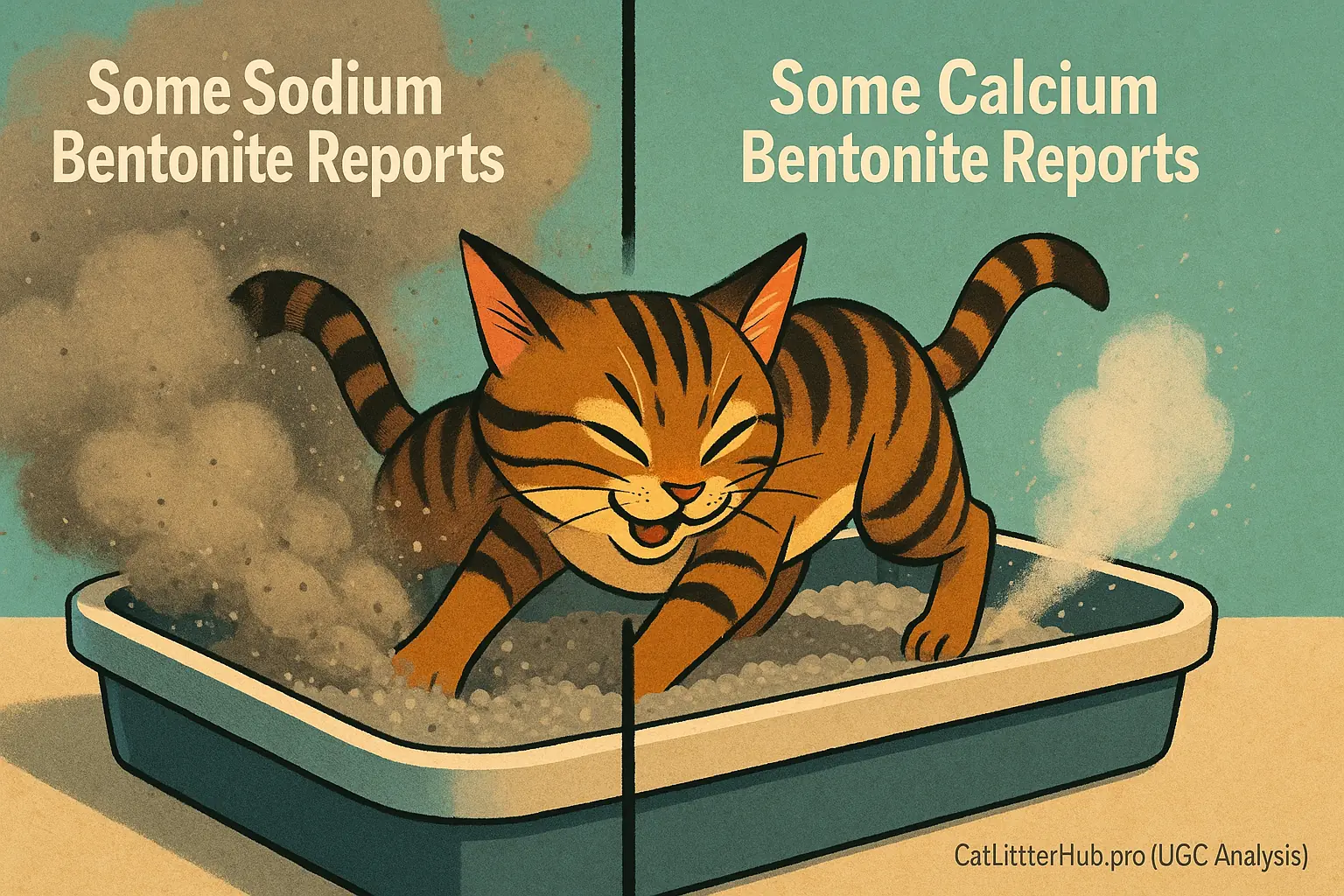
Ah, the dreaded litter dust. It's a universal complaint among cat owners. But do user experiences point a dustier finger at sodium or calcium bentonite? Cat Litter Hub's synthesis of extensive owner feedback investigates this. One truth emerges quickly: all clay litters generate some dust. A completely dust-free bentonite is a myth.
Many cat owners chronicle "dust explosions" when pouring new litter. That initial cloud can be substantial. User accounts frequently describe certain sodium bentonites creating a very noticeable plume. Some narratives, however, highlight specific calcium-based litters offering a cleaner pour. The fine, gritty film settling on nearby surfaces? That’s a relentless battle detailed in numerous user dust diaries. This residue demands constant cleaning for many households.
Scooping clumps also stirs up dust. Vigorous digging by cats contributes too. User reports show varied experiences here. Some owners describe a persistent, fine haze. This haze can linger, especially with certain sodium bentonite products they've tried. Others find some calcium options leave the air surprisingly clear during daily maintenance. Yet, the community's collective diary also includes entries about very dusty calcium litters. Brand formulation clearly matters immensely.
What about health impacts? This is a very serious concern voiced often. Users sometimes connect respiratory irritation in their cats, or even themselves, to high litter dust levels. Current user data does not consistently assign more blame to sodium versus calcium bentonite for these specific health observations. Instead, the sheer volume of dust from any litter triggers these worries. The overwhelming message from shared owner experiences: less dust means a healthier home environment for everyone.
The Price Point Puzzle: Do Users Feel a Cost Difference Justifies Performance?
Let's talk money. Cat owners frequently discuss litter prices. Many users perceive a cost difference between litters marketed as sodium-dominant versus those appearing calcium-based or blended. The community voice often questions if a higher price for supposedly premium sodium bentonite truly justifies its cost through better performance. This price-performance puzzle is a recurring theme in countless online discussions we've analyzed.
The collective experience of cat parents reveals a practical, internal cost-benefit analysis. Some owners willingly invest more in litters they believe are high-sodium bentonite. They cite superior clumping or enhanced odor control as worth the extra expense. Other cat owners scrutinize value closely. These users often find less expensive calcium bentonite or blended litters perfectly adequate, offering a better performance-to-cost ratio for their needs. We often see comments reflecting this: "Sure, Brand X clumps like a dream, but Brand Y is much cheaper and does an acceptable job for my cats." Litter longevity also heavily influences this perceived value; a pricier bag that lasts significantly longer can ultimately feel more economical to many.
Cat Acceptance & Paw-sitivity: Feline Verdicts on Bentonite Types (UGC)
Ultimately, the cat is the final judge. Do users report their feline overlords showing a clear preference for litters they associate with sodium or calcium bentonite? Our deep dive into user data reveals many owners believe so. Cats vote with their paws. This "paw-sitivity" test often highlights texture as a deciding factor. Countless reviews describe felines rejecting one litter. Then they readily accept another. Owners frequently suspect the bentonite type is the variable.
Sometimes it is not about the chemistry, but the feel. We have seen owners say, "My cat just wouldn't touch that gritty stuff, but loves the finer kind." This sentiment echoes through many user experiences. Some cat parents speculate coarser textures might correspond to calcium bentonite. Finer, softer granules are sometimes linked by users to sodium bentonite. A few owners also wonder if subtle, natural clay scent differences between types influence their cat's choice. User consensus on specific scent preferences linked to bentonite type is not clear from available reviews. The primary focus in feedback remains on texture.
The collective experience of seasoned cat parents frequently points to distinct preferences. One cat might adore a specific clay. Another cat in the same household might refuse it. This individual nature of feline preference is a constant theme. While patterns emerge, no single bentonite type guarantees universal cat approval. Observing your own cat's reaction provides the truest answer. What does your cat prefer?
Interactive Quiz: Which Bentonite Litter Type Might Be Your Cat's Best Bet?
Bentonite Matchmaker: Sodium or Calcium for Your Crew?
How sensitive are you/your cat to dust?
So, what did your quiz suggest? These hints emerge from widespread user-reported trends. Cat owner feedback often highlights distinct performance patterns between sodium and calcium bentonites. Think of this quiz as a friendly guide. Your cat, however, always has the final say.
Specific product formulations also significantly influence outcomes. What now? Use your quiz insights to shortlist potential litter types. Then, we strongly recommend exploring detailed user consensus on specific brands right here on Cat Litter Hub. This informed approach helps you find a litter your cat will truly approve.
The Bentonite Bottom Line: Does the Type Really Make a Difference to Most Users?
So, what's the real verdict from user feedback on bentonite types? Many cat owners find the distinction between sodium and calcium bentonite subtle. For others, the choice proves significant. This is especially true for users prioritizing rock-hard clumps or minimal dust.
Sodium bentonite earns praise in many reviews for superior clumping. This performance can mean more dust for some users. It might also command a higher price. Calcium bentonite, or products blending types, often represent a good compromise according to user feedback. These options frequently satisfy owners less sensitive to absolute clump strength or dust levels. Price considerations often guide this choice for many households.
Ultimately, Cat Litter Hub's synthesis of user reviews points to a clear conclusion. It is less about the strict chemical label. Finding a specific brand and formulation of clay litter that consistently delivers on your top priorities is key. Your cat gives the final paw of approval.

